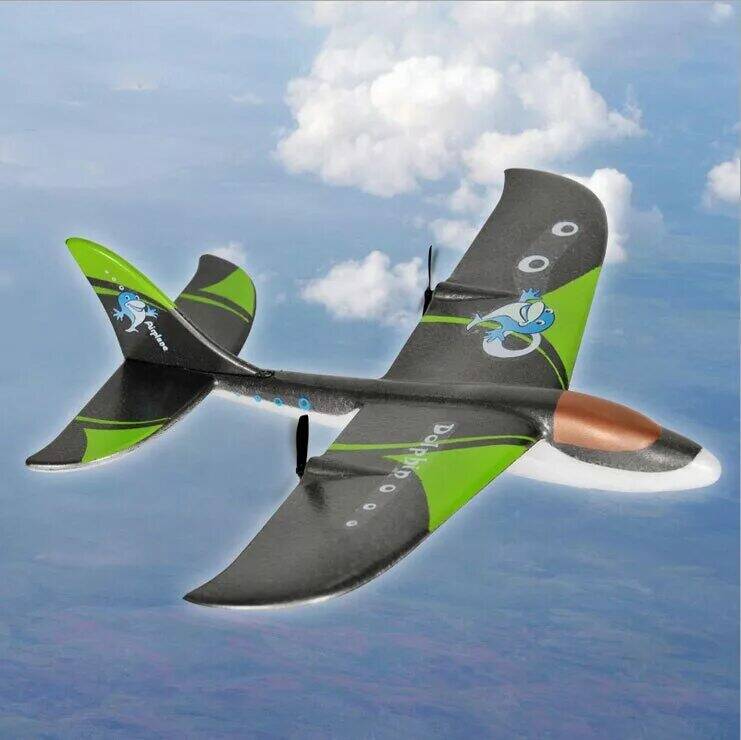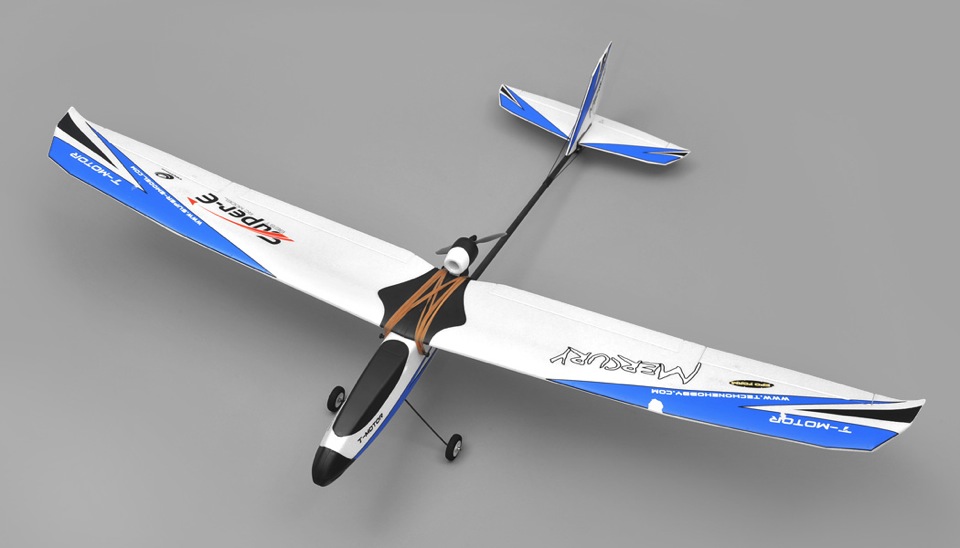
Contents
Review
Radio-controlled aircraft, also known as RC aircraft, are model airplanes that are controlled remotely through a handheld transmitter or a smartphone app. These aircraft can range in size from small indoor models to large outdoor models that are several feet in length.
RC aircraft typically use either electric motors or gas-powered engines to provide the propulsion necessary for flight. Electric RC aircraft are often preferred for indoor or small outdoor use, as they are quiet and produce no emissions. Gas-powered RC aircraft are typically used for larger, outdoor models and can provide more power and longer flight times.
RC aircraft can be controlled in several ways, including using a joystick-style transmitter or a smartphone app. These controllers typically allow the user to control the aircraft’s throttle, rudder, elevator, and ailerons, as well as other features such as landing gear, lights, and cameras.
RC aircraft can be used for a variety of purposes, including recreational flying, aerial photography, and scientific research. They are also used for competitive racing and aerobatics, with dedicated clubs and events held around the world.
Overall, radio-controlled aircraft offer a fun and exciting hobby that allows enthusiasts to experience the thrill of flight from the ground.
Dimensions of radio-controlled aircraft
Radio-controlled aircraft come in a variety of sizes and dimensions, depending on their intended use and the preferences of their builders or manufacturers. Here are some of the common dimensions of radio-controlled aircraft:
- Wingspan: The wingspan of a radio-controlled aircraft can range from a few inches for a micro drone to several feet for a large-scale model plane. The wingspan determines the amount of lift generated by the aircraft and affects its stability in flight.
- Length: The length of a radio-controlled aircraft can vary depending on the design and purpose of the aircraft. It is typically proportional to the wingspan, but some aircraft may have longer or shorter fuselages to accommodate specific components such as cameras or sensors.
- Height: The height of a radio-controlled aircraft is the distance between the bottom of the fuselage and the top of the wings. This measurement is not as critical as wingspan and length, but it can affect the aircraft’s stability and control.
- Weight: The weight of a radio-controlled aircraft depends on its size, construction materials, and equipment. Heavier aircraft require more power to lift off and fly, while lighter aircraft may be more maneuverable and responsive.
Overall, the dimensions of a radio-controlled aircraft are closely related to its intended use and performance characteristics. A small micro drone may be designed for indoor use and have a short wingspan and lightweight construction, while a large-scale model plane may be intended for outdoor use and have a longer wingspan and more robust construction.

Engines in radio-controlled aircraft
Radio-controlled aircraft can be powered by a variety of different engines, depending on the size, weight, and intended use of the aircraft. Here are some of the most common types of engines used in radio-controlled aircraft:
- Electric Motors: Electric motors are a popular choice for small and medium-sized radio-controlled aircraft, especially those designed for indoor or park flying. They are clean, quiet, and easy to operate, and require very little maintenance. They are also more environmentally friendly than other types of engines.
- Glow Engines: Glow engines are a type of internal combustion engine that use a liquid fuel called nitromethane. They are commonly used in small to medium-sized model planes and can provide more power than electric motors. Glow engines require a https://takizo.shop battery-powered glow plug to ignite the fuel, and they can be more complex to operate and maintain than electric motors.
- Gasoline Engines: Gasoline engines are another type of internal combustion engine that use gasoline or a gasoline/oil mixture as fuel. They are commonly used in larger model planes and can provide even more power than glow engines. Gasoline engines are more complex to operate and maintain than electric motors or glow engines, but they can be more economical and provide longer flight times.
- Jet Engines: Jet engines are a type of engine that uses a high-speed jet of gas to generate thrust. They are commonly used in radio-controlled model jets and can provide a realistic experience of flying a real jet. Jet engines can be very powerful but are also more expensive and complex to operate and maintain than other types of engines.
The choice of engine for a radio-controlled aircraft depends on a variety of factors, including the size and weight of the aircraft, the desired speed and power, and the experience level of the pilot. Each type of engine has its advantages and disadvantages, and pilots should choose the one that best suits their needs and preferences.
How to manage
Controlling a radio-controlled aircraft involves using a remote control transmitter to send commands to the aircraft’s receiver, which in turn controls the aircraft’s movements. Here are the basic steps for controlling a radio-controlled aircraft:
- Turn on the transmitter and the aircraft: Make sure that the transmitter and the aircraft are both turned on and that they are properly paired to each other.
- Check the controls: Before taking off, check that all the control surfaces of the aircraft are functioning correctly. This includes the elevator, ailerons, rudder, and throttle.
- Take off: To take off, increase the throttle and gently push the elevator control forward to lift the nose of the aircraft. As the aircraft gains speed and altitude, adjust the elevator and ailerons to keep it level and stable.
- Control the aircraft in flight: Once the aircraft is in the air, use the controls to adjust its altitude, direction, and speed. The elevator control adjusts the aircraft’s pitch, the ailerons control its roll, and the rudder controls its yaw. Use the throttle to adjust the aircraft’s speed.
- Land the aircraft: When it’s time to land the aircraft, reduce the throttle and use the elevator control to lower the nose of the aircraft. Use the ailerons and rudder to keep the aircraft level and straight as it descends. Once the aircraft is close to the ground, cut the throttle and gently touch down on the landing gear or belly.
- Shut down the aircraft and transmitter: After landing, turn off the aircraft and transmitter in the proper sequence to avoid damaging the electronics.
It’s important to practice flying a radio-controlled aircraft in a safe and open area away from people and obstacles. It’s also important to follow all safety guidelines and regulations, such as staying below a certain altitude and avoiding restricted airspace. Beginners may want to start with a small and simple aircraft and gradually work their way up to more complex and advanced models.
For what purposes
Radio-controlled aircraft are used for a variety of purposes, ranging from hobby and recreation to commercial and military applications. Here are some of the most common uses of radio-controlled aircraft:
- Hobby and Recreation: Many people enjoy building and flying radio-controlled aircraft as a hobby and recreational activity. They may fly them in open fields, parks, or designated flying areas, and participate in competitions or group events.
- Aerial Photography and Videography: Radio-controlled aircraft equipped with cameras or video cameras can be used to capture aerial footage for photography or videography. They can be used to obtain images and videos of landscapes, buildings, events, and other subjects from unique and interesting angles.
- Agriculture and Environmental Monitoring: Radio-controlled aircraft can be used for agriculture and environmental monitoring, such as crop mapping, plant health assessment, soil analysis, and wildlife tracking. They can provide detailed and accurate data to farmers, researchers, and environmentalists.
- Search and Rescue: Radio-controlled aircraft equipped with thermal imaging or other sensors can be used for search and rescue operations in remote or difficult-to-access areas. They can help locate missing persons, monitor fires, and assess disaster damage.
- Military and Security Applications: Radio-controlled aircraft are used in military and security applications for surveillance, reconnaissance, and intelligence gathering. They can provide real-time video and other data to military and security personnel to aid in mission planning and decision-making.
- Scientific Research: Radio-controlled aircraft can be used for scientific research, such as atmospheric studies, oceanographic research, and wildlife observation. They can provide a low-cost and flexible platform for collecting data and conducting experiments.
Overall, radio-controlled aircraft are versatile and useful tools for a wide range of applications. They can provide unique capabilities and perspectives that are difficult or impossible to obtain through other means.
Radio-controlled aircraft as a hobby
Radio-controlled aircraft are a popular and exciting hobby for people of all ages and skill levels. Here are some reasons why:
- Thrill of Flying: Flying a radio-controlled aircraft provides a unique and thrilling experience. It allows you to experience the sensation of flight and the feeling of being in control of a flying machine.
- Building and Customization: Many radio-controlled aircraft enthusiasts enjoy building and customizing their aircraft. This can be a rewarding and creative process that allows you to personalize your aircraft to your liking.
- Socializing and Community: The radio-controlled aircraft hobby has a strong community and social aspect. There are many clubs and events where enthusiasts can meet and fly together, share knowledge and expertise, and learn from each other.
- Skill Development: Flying a radio-controlled aircraft requires skill and practice. As you improve your skills, you can take on more challenging maneuvers and learn new techniques. This can be a satisfying and rewarding process that helps develop hand-eye coordination and spatial awareness.
- Cost Effective: Compared to other hobbies, such as flying real aircraft or racing cars, the radio-controlled aircraft hobby can be relatively inexpensive. There are many affordable models available for beginners, and you can gradually invest in more advanced and complex models as you gain experience.
Overall, the radio-controlled aircraft hobby provides a fun and rewarding way to explore the world of flight and develop new skills. Whether you are a beginner or an experienced pilot, there is always something new and exciting to discover in this hobby.